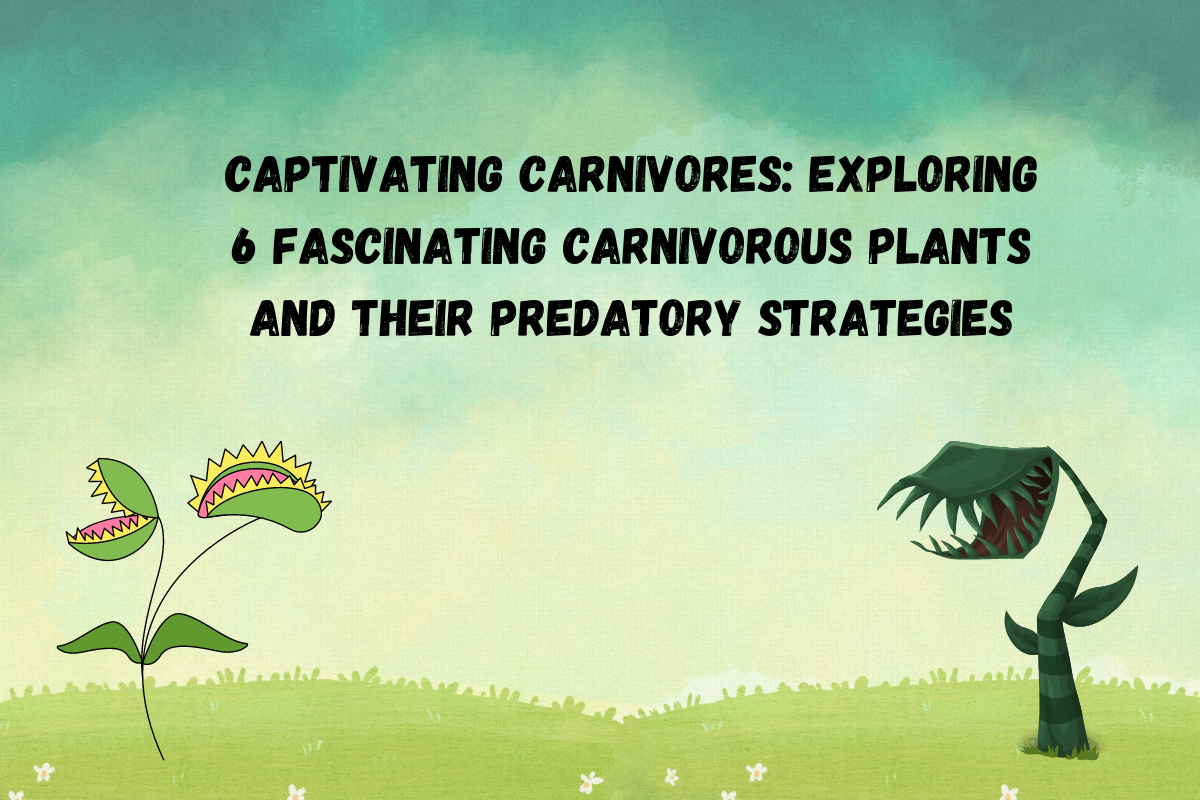Captivating Carnivores: Exploring 6 Fascinating Carnivorous Plants and Their Predatory Strategies
By~ Scholar Planet
Created At: 21 Aug, 2023

Nature has a way of captivating
us with its incredible diversity, and carnivorous plants are a prime example of
this. These remarkable botanical wonders have evolved unique mechanisms to
catch and digest insects, spiders, and even small animals as a source of
nutrients. In this article, we delve into the intriguing world of carnivorous
plants, exploring six species and the captivating methods they employ to secure
their prey.
1. Venus Flytrap (Dionaea
muscipula):
The Venus Flytrap is perhaps the
most iconic carnivorous plant. Its specialized leaves bear snap traps with
sensitive trigger hairs. When an unsuspecting insect touches these hairs, the
trap snaps shut in a matter of seconds, ensnaring the prey. Digestive enzymes
are then secreted to break down the prey and absorb nutrients.
2. Pitcher Plants (Nepenthes
spp.):
Pitcher plants lure prey with
their pitcher-shaped leaves filled with digestive fluids. Insects are attracted
to the enticing colours and nectar around the rim of the pitcher. Once inside,
they slip into the digestive fluid at the bottom, where enzymes break down
their bodies.
3. Sundews (Drosera spp.):
Sundews have leaves covered in
sticky, glandular hairs that trap insects. The hairs curl in response to
struggling prey, further ensnaring them. Enzymes are then released to digest
the trapped insects. Sundews are a marvel of adaptive evolution, with
variations in the size and arrangement of their sticky tentacles.
4. North American Pitcher
Plant (Sarracenia spp.):
Similar to Nepenthes, the North American
Pitcher Plant has tube-like leaves that trap insects. The upper part of the
leaf is slippery, while downward-pointing hairs prevent prey from escaping.
Insects that fall into the pitcher are digested and absorbed by the plant.
5. Waterwheel Plant (Aldrovanda
vesiculosa):
This aquatic carnivore uses a
whirligig motion to trap aquatic insects. Its specialized underwater leaves
have traps with trigger hairs that, when touched, cause the trap to close
rapidly. This unique motion ensures the capture of prey swimming on the water's
surface.
6. Cobra Plant (Darlingtonia
californica):
Native to North America, the
Cobra Plant features tubular leaves with a hood that resembles a cobra's head.
Prey are lured into the hood, which is filled with digestive enzymes.
Confusingly, the escape route is transparent, causing insects to fly towards
what they perceive as an exit but instead meet their demise.
The world of carnivorous plants
showcases the remarkable adaptability and ingenuity of nature. These
captivating species have evolved diverse mechanisms to catch and digest prey,
ensuring their survival in nutrient-poor environments. From the Venus Flytrap's
rapid snap traps to the Pitcher Plant's enticing fluid-filled pitchers, each
carnivorous plant has developed its own unique strategy to secure nutrients.
Studying
these plants not only expands our understanding of plant biology but also
underscores the intricate relationships between species in various ecosystems.
As we marvel at the complexity of these botanical predators, we gain a deeper
appreciation for the ways in which nature continues to surprise and awe us.
